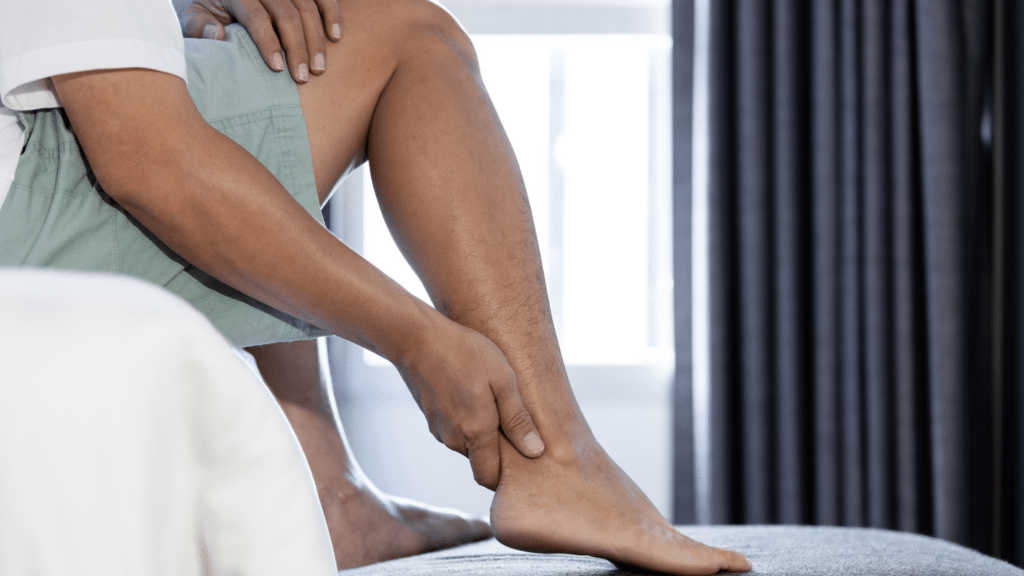Achilles tendonitis, is a common condition that affects the Achilles tendon. This tendon, located at the back of the ankle, connects the calf muscles to the heel bone. It plays a crucial role in walking, running, and jumping. Achilles tendonitis occurs when the tendon becomes inflamed or irritated, leading to pain and discomfort. It is a condition that can impact individuals of all ages and activity levels, from athletes to sedentary individuals.
Causes of Achilles Tendonitis
Achilles tendonitis can be caused by a variety of factors. One of the primary causes is overuse or repetitive strain on the tendon. This often occurs in athletes who engage in jumping or running activities, such as basketball or tennis. The repetitive stress placed on the tendon can lead to micro-tears and inflammation. Additionally, sudden increases in activity level or intensity can contribute to Achilles tendonitis development.
Another common cause of Achilles tendonitis is improper footwear. Wearing shoes that do not provide adequate support or do not fit properly can increase the risk of developing this condition. The lack of proper cushioning and arch support can place excessive stress on the Achilles tendon, leading to inflammation.
Risk factors for Achilles Tendonitis
Certain factors can increase an individual’s risk of developing Achilles tendonitis. Age is a significant risk factor, as the tendon becomes less flexible and more prone to injury as we age. Individuals in their 30s and 40s are more susceptible to this condition.
Engaging in certain sports or activities can also increase the risk of Achilles tendonitis. High-impact sports that involve repetitive movements, such as running or jumping, can place excessive stress on the tendon. Additionally, individuals who have tight calf muscles or flat feet may be at a higher risk of developing this condition.
Signs and symptoms of Achilles Tendonitis
The most common symptoms of Achilles tendonitis are pain and tenderness in the back of the ankle, near the heel. This pain may initially be mild but can worsen if not treated. The pain is often worse after physical activity or prolonged periods of rest. Swelling and stiffness in the area may also be present.
Individuals with Achilles tendonitis may experience difficulty walking or participating in activities that involve bending the ankle. In severe cases, a noticeable thickening or enlargement of the tendon may occur.
Diagnosis of Achilles Tendonitis
To diagnose Achilles tendonitis, a healthcare professional will typically begin by conducting a physical examination of the affected area. They will assess for signs of inflammation, swelling, and tenderness. The individual will be asked about their symptoms and any recent activities or changes in footwear.
In some cases, imaging tests may be recommended to confirm the diagnosis and assess the extent of the injury. This may include an ultrasound or MRI scan, which can provide detailed images of the Achilles tendon.
Non-surgical treatment options
Fortunately, many cases of Achilles tendonitis can be effectively treated without surgery. The primary goal of non-surgical treatment is to reduce pain, inflammation, and promote healing. This may involve a combination of the following approaches:
- Rest and activity modification: One of the essential components of treatment is allowing the tendon to rest and heal. This may involve reducing or modifying activities that aggravate the condition, such as running or jumping. Resting the affected leg and avoiding excessive weight-bearing can help alleviate symptoms.
- Physical therapy: Physical therapy exercises can play a vital role in the treatment of Achilles tendonitis. Stretching and strengthening exercises can help improve flexibility and reduce strain on the tendon. Eccentric exercises, which involve lengthening the calf muscles while under tension, have been shown to be particularly effective in treating this condition.
- Medications: Non-steroidal anti-inflammatory drugs (NSAIDs) may be prescribed to help reduce pain and inflammation. These medications can be taken orally or applied topically in the form of creams or gels.
Prevention of Achilles Tendonitis
While Achilles tendonitis can be a challenging condition to manage, there are steps individuals can take to reduce their risk of developing it:
- Proper footwear: Wearing shoes that provide adequate support and cushioning is essential. Shoes with a cushioned heel and arch support can help reduce the stress placed on the Achilles tendon during physical activity.
- Gradual progression of activity: When starting a new exercise program or increasing the intensity of physical activity, it is crucial to do so gradually. Sudden increases in activity level can place excessive strain on the tendon and increase the risk of injury.
- Stretching and strengthening exercises: Regular stretching and strengthening exercises can help maintain flexibility and strength in the calf muscles. This can reduce the strain on the Achilles tendon during physical activity.
Conclusion
Achilles tendonitis is a common condition that can cause pain and discomfort in the back of the ankle. By understanding the causes, symptoms, and treatment options for this condition, individuals can take steps to manage and prevent Achilles tendonitis. It is essential to seek medical attention if symptoms persist or worsen, as early intervention can lead to better outcomes. With appropriate treatment and lifestyle modifications, individuals can recover from Achilles tendonitis and resume their normal activities pain-free.
If you are experiencing persistent pain in the back of your ankle, it is important to seek medical advice. Contact a healthcare professional to discuss your symptoms and receive an accurate diagnosis and appropriate treatment plan.

